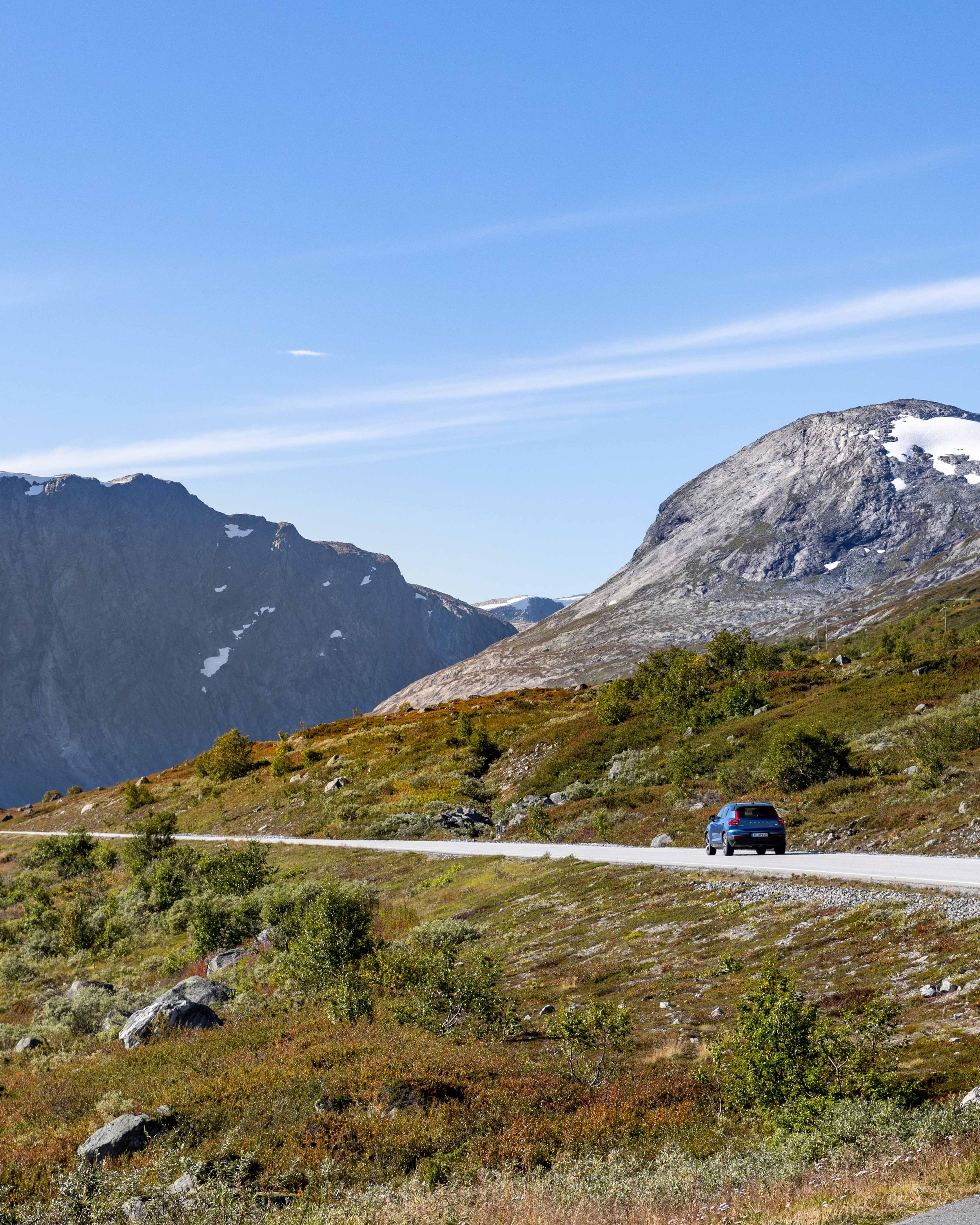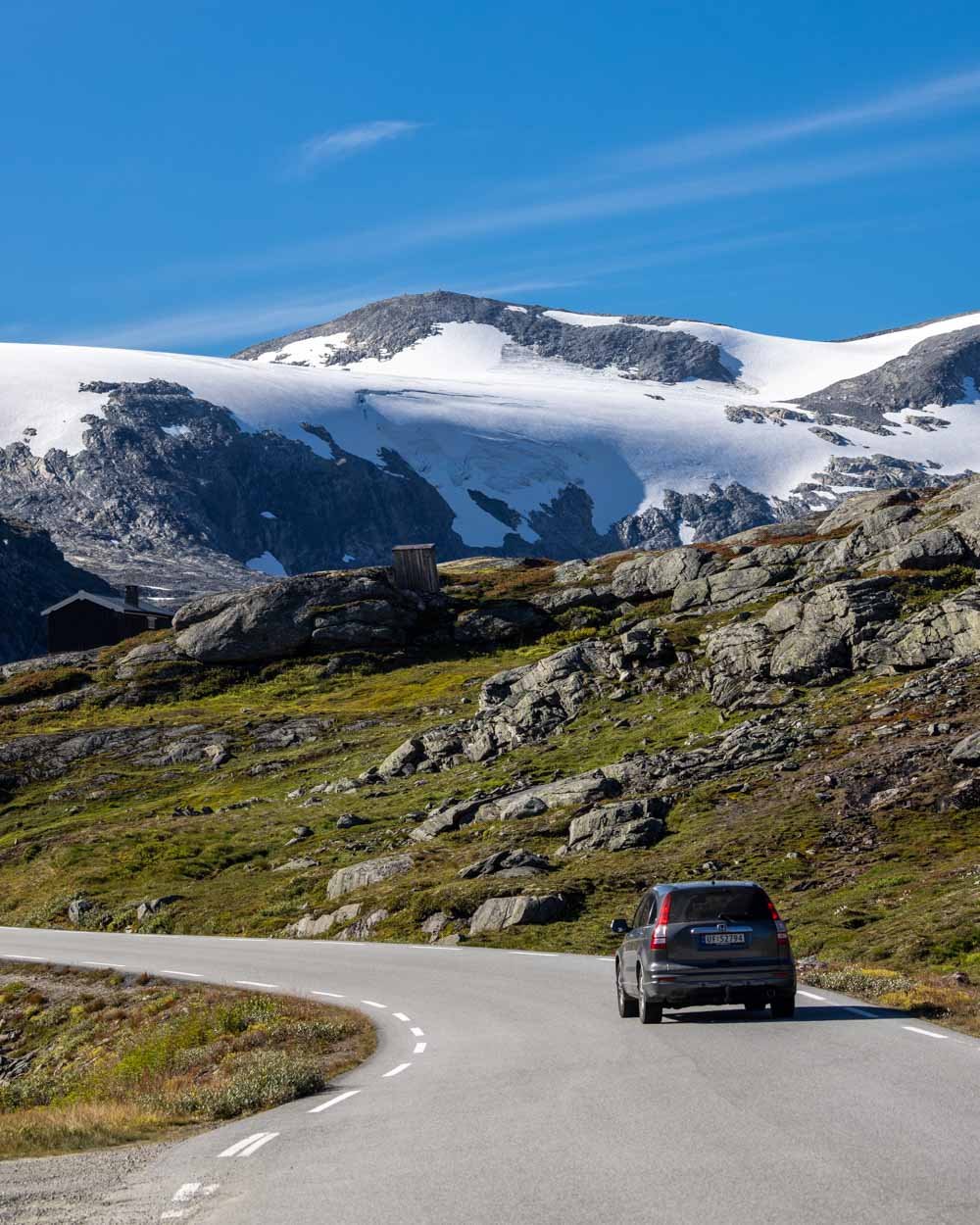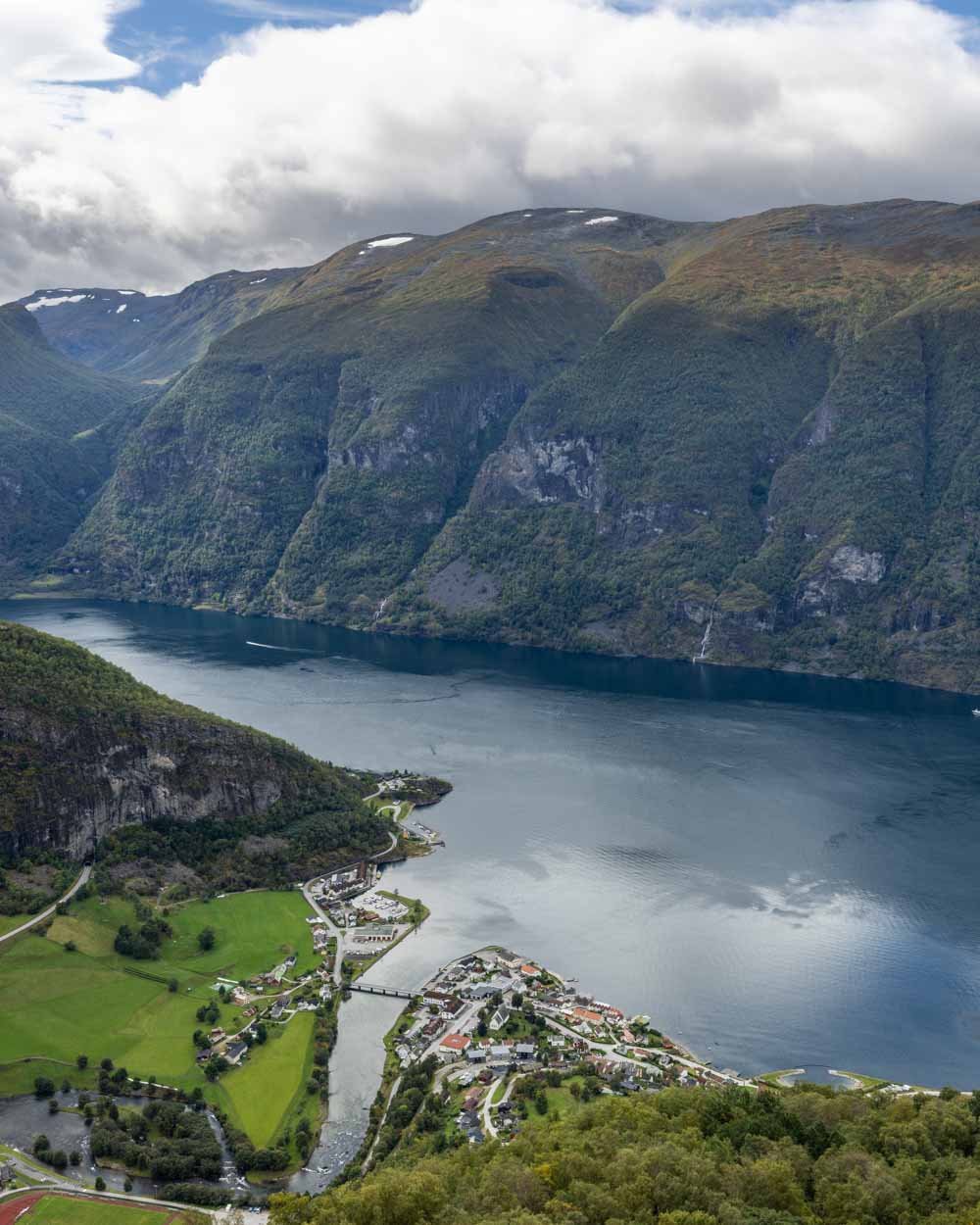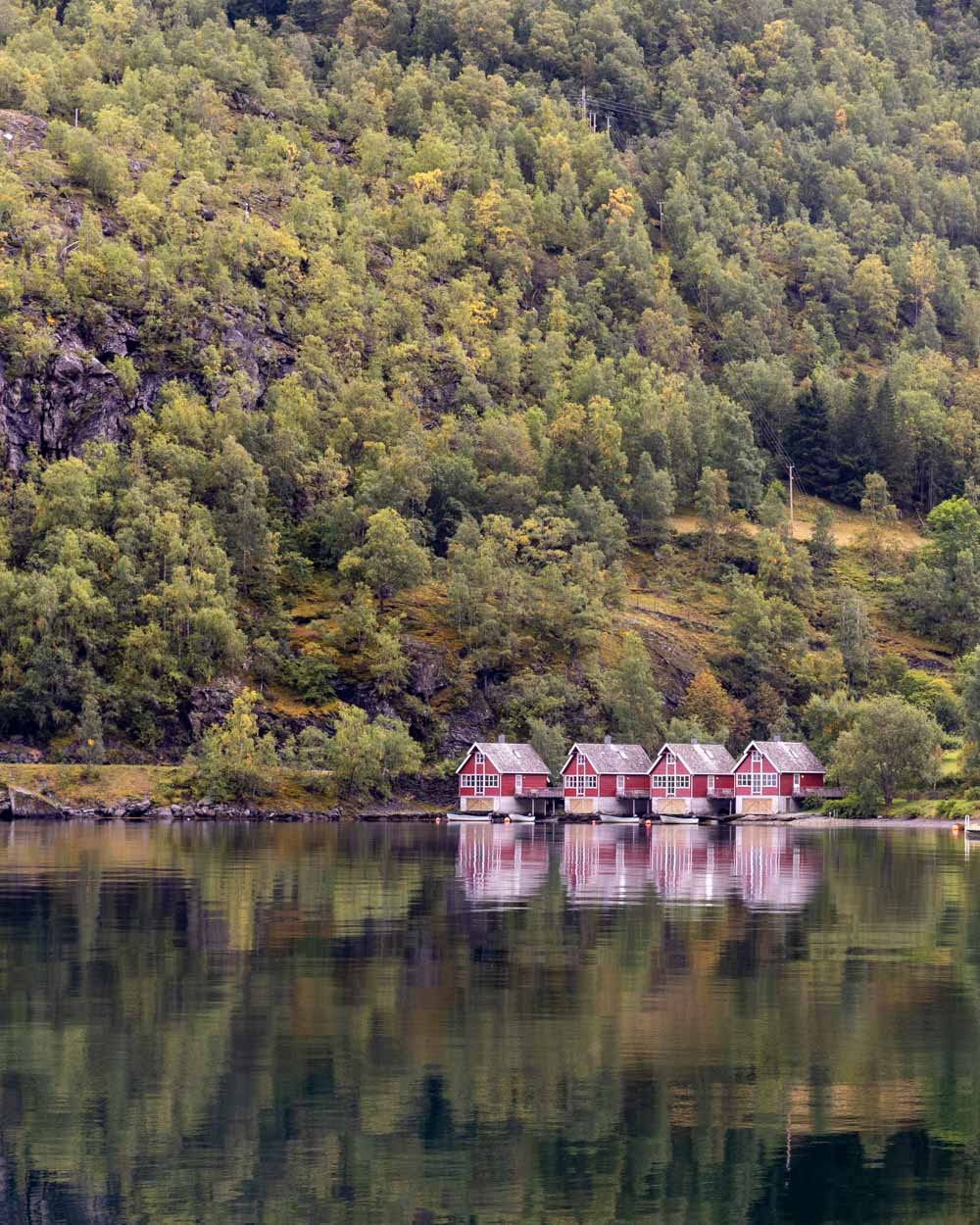Norway is a huge country and a road trip around this beautiful part of the world is one of the highlights of any visit. It’s hard to really explain just how jaw-dropping the views are from almost every road, and long drives seem to fly past when you’re continuously surrounded by mountains, fjords and glacial lakes - landscapes that have to be seen to be believed.
But what is it like to drive here? How busy are the roads and how steep? What are the toll charges like and is it easy to find parking?
These are all the things we were wondering about before our trip, so we’ve put together all of our key takeaways from three weeks driving around Norway, so that you know exactly what to expect.
Driving in Norway
An overview
It’s no secret that we are big proponents of hiring a car to explore a new country. There are exceptions (we’re not quite ready to drive around India or Egypt just yet), but when we can, we drive ourselves everywhere. It gives you the freedom to stop wherever you want and on your own schedule.
Norway is easily one of the most beautiful places we have ever road tripped and we were lucky enough to see moose, reindeer and musk ox, all from our car window! The roads were excellent and the driving was generally easy.
So far we’ve only driven in Norway in autumn, so we haven’t encountered winter driving conditions. We’re actually hoping to make a winter trip in the future, so we’ll update this guide when we do.
There’s no better way to get around the country, so here’s everything you need to know before you make the trip.
How to find the right car and rental car company
Researching rental cars
After a lot of research, we decided to hire from Hertz near Bergen airport (which is where we flew into). We use RentalCars.com as not only does it compare most rental car companies, but it’s pretty clear on each company’s policy on insurance, mileage and any other costs you can expect.
As you can see below, they clearly show things like “Free cancellation”, the milage policy (in this case 450km), the transmission of the car, and the “important info” goes into things like insurance.
Mileage
As our visit was in September, the prices were very reasonable and - importantly - Hertz were offering unlimited mileage on an SUV. This is really important as you’ll find that you can wrack up those kilometres very quickly (our first journey from the airport was over 350km!).
While 150km per day may be ok for a lot of people, it’s worth checking what the additional cost of a hiring with a company that offers unlimited mileage would be if you’re planning on doing a lot of exploring.
Location of the rental car
Another thing to consider is where you hire from. We chose to hire from a place that was three miles away from the airport, as it was lower in price. This was partially mitigated by a very expensive taxi (300NOK/$28 USD) for a five minute journey, but still saved us over $100 on the rental price.
If you choose to hire outside of the airport, make sure you check the opening hours of the company. Due to a delayed flight, we arrived after the Hertz office was closed. This could have been a big problem, but luckily they have a keybox, a bit like you do for an Airbnb, so we could pick the car up out of hours. Not all car companies will allow this so check in advance if your flight is landing close to the closing time.
Insurance
Unless you get lucky, the excess insurance with rental car companies is extortionate. Sometimes the insurance can cost close to the the car hire amount! I highly recommend organising an insurance policy to cover your excess before arrival. Some banks will offer this to their customers, and many travel insurance policies include this.
We use RentalCover.com. In Norway it covered all excess insurance claims, including windscreens and underside. For us it cost less than $4 a day, which was a fraction of what it would cost directly with the rental car companies and guaranteed us peace of mind.
Download Google Maps
Google Maps can save maps to your phone, allowing you to do route guidance completely offline.
On your phone click on the menu (it should be three horizontal lines in the search box) -> offline maps -> custom map -> select the area you want to visit and download. This will save you money and alleviate the fear of getting lost when you have no signal. Not everywhere is on Google Maps, but it’s close to. We found the maps to be generally accurate for all but the odd dirt road destination.
What to expect when Driving in Norway
1: Is driving in Norway difficult?
Driving around Norway is very easy, especially if you are used to driving on the right side of the road. It is also a highlight of a trip to Norway, as we often found ourselves stopping multiple times to step out and admire the incredible scenery - you have to allow longer than you’d think for each journey! The route from Lom to Geirangerfjord took well over an hour longer than it should have done, purely because it was so beautiful.
On the whole, the roads are pretty quiet outside of the cities, and you can go for long stretches seeing very few others on the road. Even when you do, Norwegian drivers tend to be very considerate, and aren’t aggressive. Sometimes you’ll see someone whizz past you in a tunnel (a place I assume there are no speed cameras), but otherwise you are always given time and space on the roads.
2: Quality of the roads
Before arriving in Norway, I was expecting a lot of hairpins and steep roads, as the country is incredibly mountainous. We thought some of the steep mountain roads might be difficult, but they are so well looked after that if you take it slowly you shouldn’t run into any difficulties.
There were also less of them than we were expecting, as the whole country has an extensive network of tunnels and ferries, often instead of going over the mountains, you could go around or through them! This also means that a lot of your journeys will be spent underground, and we were gobsmacked when we entered a 26km long tunnel near Flåm - yes, that’s nearly 30 minutes spent in the same tunnel!
The roads throughout the area we explored were the best we’ve seen anywhere in the world. We barely saw a pothole or a bump anywhere, and whilst there is always a lot of roadworks going on, we never encountered anything but a buttery smooth surface.
It is worth noting that we haven’t visited during the winter season, or any time where snow would be a consideration.
The majority of roads outside of the main cities are single lane, and in rural areas the markings in the middle of the road can disappear, which can be pretty scary when lorries are speeding past on the other side of the road! Which brings us neatly onto our next subject.
3: Speed limits & speeding
Whilst you don’t want to speed anywhere in the world, getting caught speeding in Norway will be a painful experience. The fines in this part of the world are infamous - often over $400 USD for speeding and over $730 USD for running a red light. For that reason, I highly recommend driving well under the limit and ensure you never accidentally exceed the limit.
The national speed limit is 80kmph (50mph), so getting around can take a long time (especially as the limit drops to 50kmph around the many areas with road works). However, the views are so spectacular that we were in no rush!
4: Sat Navs & Navigation
One of the hardest parts of driving in Norway is navigating your way around. We often found that Google Maps didn’t understand addresses or place names: for instance, the village of Lom would appear as an entire state when we searched, making it impossible to estimate distances. If you’re just aiming for a town that doesn’t appear in Google Maps, it’s easier to pick a supermarket or cafe in that town and aim for that instead of just using the general town name.
This also made the addresses of our accommodation tricky, as Google Maps wasn’t particularly accurate on knowing where street numbers were and could be a long way out. Apple Maps tended to work slightly better, but the best method was to use the traditional way - knowing what your building looked like and just trying to see it from the closest road! For this reason, it’s best to build in some extra time to your journeys.
If you’re staying in private apartments rather than hotels then ask in advance for some local directions as we got lost finding around 75% of the properties, and based on other reviews we aren’t the only ones.
5: Tolls
One of the biggest surprises about driving in Norway was the proliferation of toll roads and ferries. It’s pretty hard to do any long journeys without stacking up toll charges, but what makes it even more confusing is that half the time they aren’t signposted! Even the few that were signposted rarely said what the cost of the toll road was. Nor the cost of the car ferries.
The reality is that the toll roads aren’t expensive on an individual basis (ranging from 12 NOK/$1.12 USD to 117 NOK/$11 USD), but they add up if you’re doing long journeys. There is the odd exception if a route is to a tourist attraction, such as the Dalsnibba Lookout in Geirangerfjord, which costs over USD $25.
Similarly, you’ll struggle to get around the fjords and southwestern Norway without having to take a ferry.
Most rental companies include an auto pass in the car, so that they just invoice you after you’ve returned the car. As an indication of how much it can cost: we spent about $150 USD in tolls across three weeks in Norway.
6: Parking
Outside of the biggest cities, parking is rarely an issue. The majority of rural towns and villages have ample free parking, which is clearly labelled everywhere. However, this changes in places such as Stavanger, Bergen and Oslo, where parking can be scarce, only available for short periods and incredibly expensive.
When booking your accommodation, having parking included can save you as much as 250NOK ($25USD) per day. Places like Stavanger often have very short time limits on parking, meaning even if you find a space outside of a paid car park, you have to move your car every hour.
It’s also worth noting that many of the best hikes in the country also come with eye-watering parking fees. For instance, parking for the famous Trolltunga will set you back $60USD per car (and that doesn’t include the eye-watering toll road)! Even trails such as the Bergessen in Jotunheimen National Park will set you back $15USD to park for a day a few miles from the ferry to the trailhead.
Norway Driving Rules
Which side of the road?
Like the majority of Europe, Norway drives on the right side of the road. Great for most people, something to get used to for Brits and Australians!
Speed Limits
As we stated earlier, be very aware of the speed limit wherever you are, as the cost of a fine will be high if you speed. Using Google Maps on Apple Car Play can help (as it shows the speed limit on the road you are on), but in cities it tends to be between 30kmph to 60kmph, and in rural areas it’s 80kmph - which is shown by the national speed limit sign, or a black cross through the previous speed limit.
Do you need an international drivers license?
If you are from a country that uses a latin/roman alphabet, then no, you don’t need an international drivers license. However, if your driver’s license is in Chinese, Arabic or non-latin based languages, then you will.
Alcohol limits
Essentially you can’t drink anything and drive in Norway! The legal limit is 0.02% blood alcohol, and it’s hard to know what alcoholic drink will keep you within that limit. Being even a fraction above this level currently comes with a $5,635 USD fine.
To keep safe and avoid a hefty fine, we’d recommend staying away from any alcohol altogether before you drive.
Where to rent a car
We always use rentalcars.com when we book car hire abroad as it shows prices from all the major car hire companies (and a few we’d never heard of). It usually includes insurance for collision, third party liability and theft protection.
You can get a quote below.
This post may contain affiliate links, meaning at no additional cost to you, that we will earn a small commission if you click through and decide to make a purchase. This helps towards the costs of running our website. Thanks for your support.














